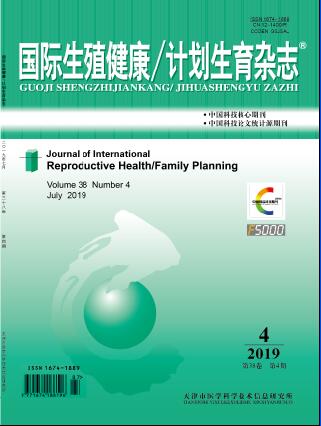|
|
Pregnancy Outcomes of IVF-ET in Women Aged More Than 40 Years
XIA Meng,DONG Juan,MA Long,WU Chun-xiang,CAI Ling-bo,LIU Jia-yin
2019, 38 (4):
269-275.
Objective:To investigate the pregnancy outcomes of in vitro fertilization-embryo transfer (IVF-ET) therapy in women aged ≥ 40 years, so as to provide a clinical reference for the fertility counseling the individualized assisted reproductive treatment (ART) for those ageing women. Methods:The clinical data of 2 467 women aged 40 and older years who used autologous oocytes in ART cycles between January 2015 and December 2017 in our center were retrospectively analyzed. Results:In the IVF-ET cycles, the retrieved oocytes were decreased with increased age in women aged ≥40 years (the average retrieved oocytes in women aged 40-48 years were 2.97, 2.69, 2.17, 2.01, 1.77, 1.61, 1.68, 1.29 and 1.00; when compared the 44-48 years′ group and the 40-43 years′ group, P<0.05). In particular, the embryo development potential was decreased significantly, especially in women aged ≥44 years (the percentage of blastocyst formation in women aged 40-48 years were 48.90%, 43.72%, 33.67%, 34.29%, 24.39%, 21.14%, 26.32%, 16.67%, and 0%; when compared the 44-48 years′ group and the 40-43 years′ group, P<0.05). There were a total of 518 cases with fresh embryo transfer cycles. The clinical pregnancy rate (in women aged 40-48 years, were 26.92%, 21.15%, 20.79%, 10.96%, 18.87%, 11.11%, 5.88%, 0% and 0%; when compared the 43-48 years′ group and the 40-42 years′ group, P<0.05), the implantation rate (in women aged 40-48 years, were 23.65%, 19.51%, 17.70%, 8.54%, 7.49%, 10.81%, 5.56%, 0% and 0%; when compared the 43-48 years′ group and the 40-42 years′ group, P<0.05) and the live-birth rate (in women aged 40-46 years, were 18.46%, 10.58%, 9.90%, 5.48%, 5.66%, 2.78%, and 5.88%; when compared the 43-46 years′ group and the 40-42 years′ group, P<0.05) were decreased with age, while these parameters in women aged over 43 years were worse. The abortion rate was increased significantly in women aged ≥44 years (in women aged 40-45 years, were 31.43%, 50.00%, 52.38%, 50.00%, 70.00%, and 75.00%; when compared the 44-45 years′ group and the 40-43 years′ group, P<0.05), while there was only one case of pregnancy and delivery in all woman aged 46 years, and no successful pregnant case in those women aged 47 and 48 years. The pregnancy rate, implantation rate and live birth rate in the AMH≤1.0 ng/mL group were significantly decreased than those in the AMH>1.0 ng/mL group (27.04% vs. 14.74%, 22.99% vs. 13.50%, and 15.88% vs. 7.37%; all P<0.05), while the abortion rate was increased significantly (41.27% vs. 50.00%, P<0.05). Conclusions:The fertility was declined gradually with the increased age in women aged ≥40 years. It is still worthy to do ART in women aged 40 43, especially in women with potential ovarian reserve (AMH>1.0 ng/mL). However, in principle, ART treatment should not be recommended for women aged over 44 years, and oocytes donation or adoption should be strongly recommended for those women aged over 46 years and with the exhausted ovarian function.
Related Articles |
Metrics
|

